By Howard Shafer — We did not go to Utah during COVID-19 in order to bicycle, although once there, it would have been foolish of us not to. No, we went because dental implants are much more expensive in our California paradise than in Utah, and the difference easily paid for the trip with some left over. We weighed the cost savings versus the menace of travel in the days of the corona virus and went. We arrived in Utah during the week of Adventure Cycling’s Bike Your Park Day, so of course we were going to bicycle. The only question was to which park would we bike?
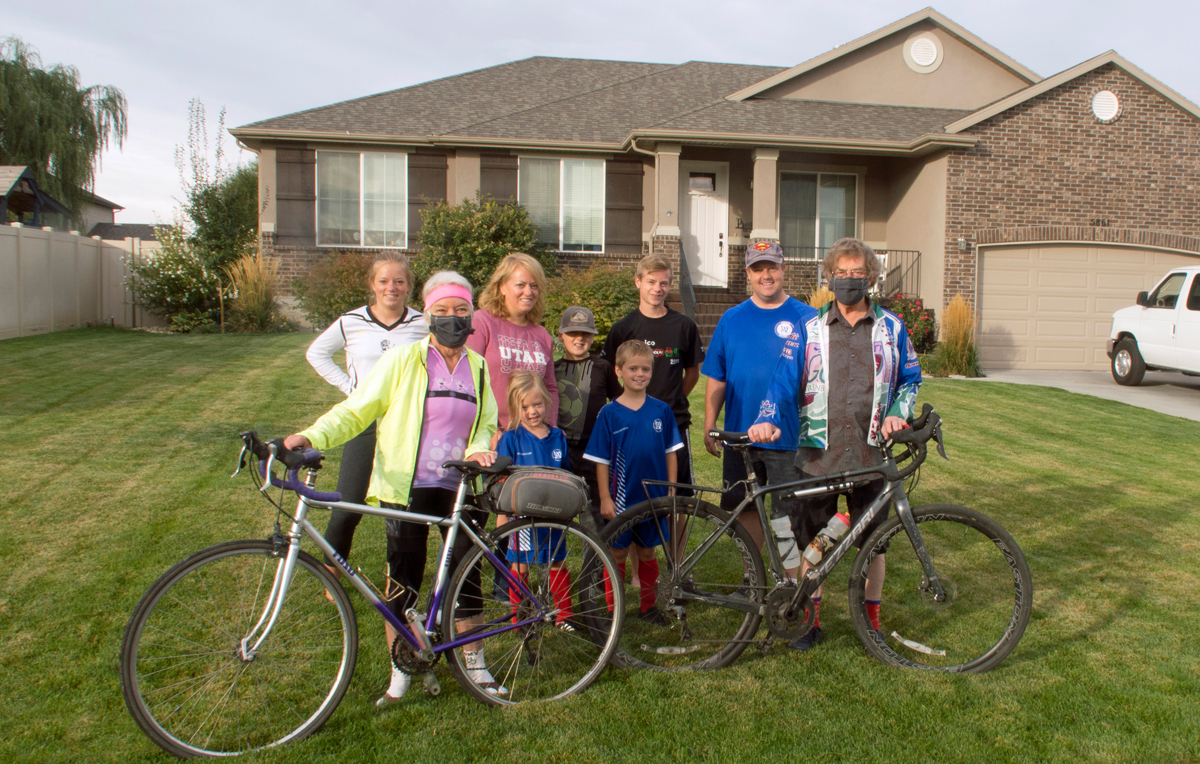
Utah is known for its many spectacular national and state parks, but most are located in central and southern Utah, whereas we would be up north near Ogden. And we were looking for a day trip, not a week-long tour, because overnights on the road just increase the COVID risks. We focused on Antelope Island State Park, the largest of the Great Salt Lake islands, and, we were told, a haven for bicyclists and other large mammals.
That is why, at 9 am on the morning of September 26, 2020, wearing masks in celebration of the pandemic, we unloaded our bicycles from our Subaru in front of the well-manicured lawn of an attractive, two-story, Mormon home in the town of Hooper, Utah where my niece, her husband, and their five children live. Hooper is one of several expanding towns spreading out in the flatlands between the Wasatch Mountains and the Great Salt Lake. The oldest son, having just turned sixteen, let us admire his very own driver’s license, while his younger brother who was leaving for a class where he would learn to shoot a shotgun, carried a weapon, which was practically as long as he was tall. Such a class that would have been very unlikely in Silicon Valley, California. We visited on the family’s lawn because going into their home would have presented a COVID risk to the family that it didn’t need.
After our hellos, we removed our masks and bicycled south through old farms and new housing on straight, secondary highways with narrow shoulders. We passed rows of newly half-built, five-bedroom houses plus the occasional old farm featuring the narrow, two-story, original yellow brick construction of nineteenth century, Mormon pioneer homes. Sometimes, we passed homes flying black-and-white versions of American flags with one stripe blue instead of black. These flags, we were told, assert that “Blue Lives Matter,” referring to the dangers the police experience in carrying out their duties, a very commendable concern. We were more familiar with the “Black Lives Matter” banners on northern California lawns (where droughts are doing their best to relieve us of these lawns), which address a very different concern. Admittedly, we Californians are hardly in a position to lecture.
Antelope Island is reached via a seven-mile-long causeway across Farmington Bay from the east side of the Great Salt Lake. We dutifully donned our masks to go through the tollbooth and were charged three dollars per bicycle. On our way again, we followed a highway with wide bike lanes bordered by salt flats and salt water.
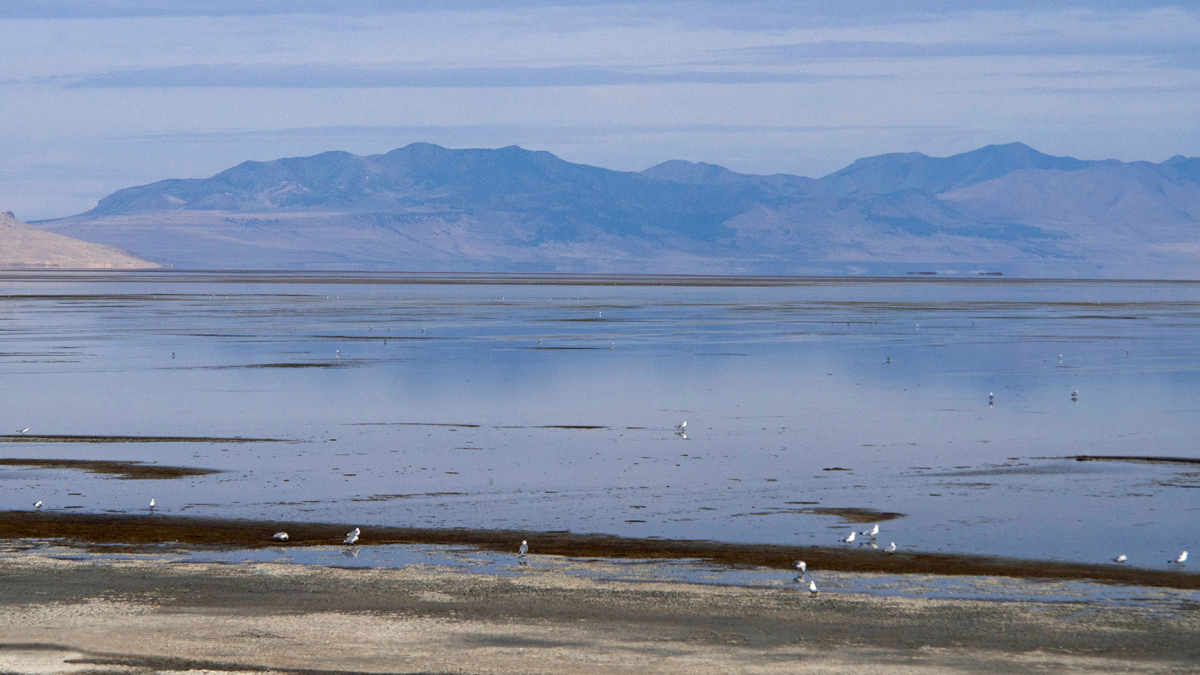
Across the water to the north, partially obscured by Fremont Island, we saw the barren hills of Promontory Point, where, in 1869 the Central Pacific Railroad from California met and was joined via a golden spike to the Union Pacific Railroad from the East, thus completing the first intercontinental railroad. You can go to the Golden Spike National Historic Park and watch re-enactments of the Golden Spike ceremony complete with beautiful replicas of the two engines that took part in the original ceremonies: the Central Pacific’s Jupiter and the Union Pacific’s No. 119.
To the south, across the causeway, under a dome of gray sky, Antelope Island rose out of water so shallow, it sometimes dries up entirely. That gray sky had us worried. Would it rain? Our part of California does not allow rain in September. In fact, the city of Cupertino (the world headquarters of Apple Computer) is rumored to have once passed an ordinance that tried to permanently outlaw rain.
The trip to Antelope Island appeared immensely popular with cyclists. Many riders passed us on their morning workouts while we tourists stopped to take photos of the stark yet grand vistas on either side. Those cyclists would have passed us anyway. Their lungs were used to this 4000-foot plus elevation. We live close enough to sea level that global warming might someday bring San Francisco Bay water to lap at our feet. The first things we saw as we neared Antelope Island were the Antelope eBikes rental office, a marina with no boats (after all, it was the cold end of September), and on a low hill behind them both, the park visitor center.
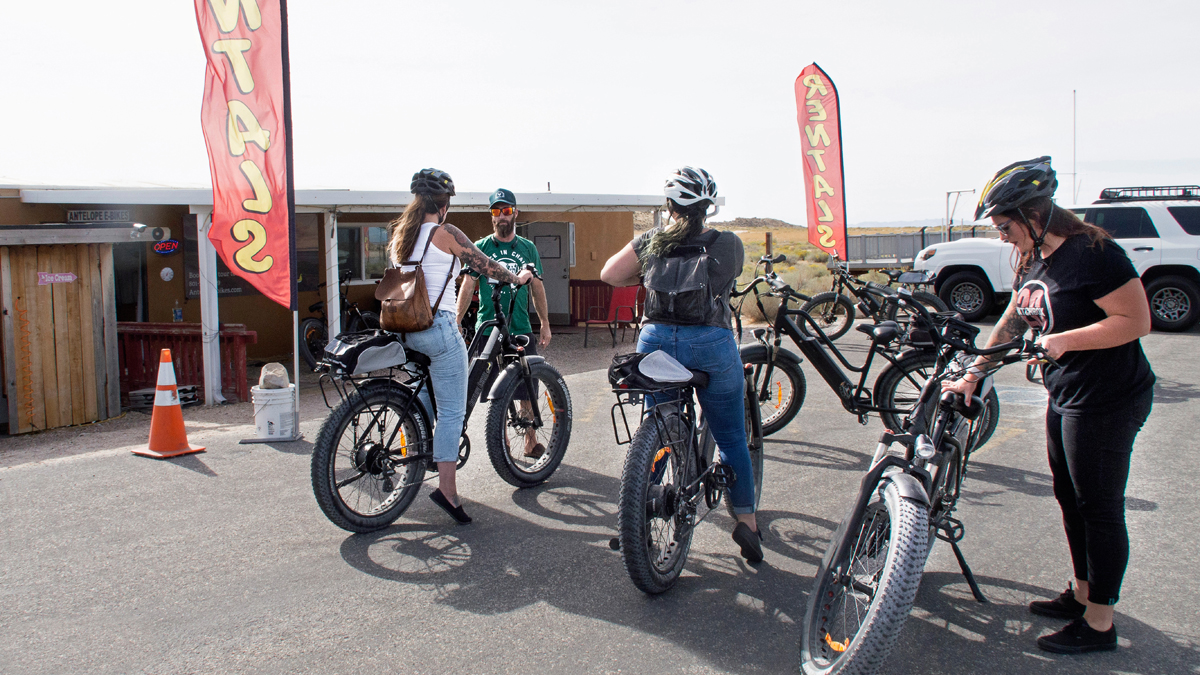
Tice Child, who did not wear a mask (a surprise for us Californians but not so rare in Utah at that time) and who with his wife runs Antelope eBikes said that both his rentals and his guided tours were wildly popular and had been featured on several TV programs. He rents several models of fat-tire Bakcou eBikes as well as the Evolve e-Longboard. We encountered his eBikes several times on the roads and trails we rode. I myself have often entertained less than complimentary thoughts when passed by an eBike. After all, I reason, I’m building muscles, strengthening my heart, and reducing global warming all while travelling under my own steam. Someone told me that eBikes are like crack to bicyclists. Once you start, you can’t quit. If it’s that bad, I tell myself, I’ll never get addicted because I’ll never start. I’ll just say No!
On the other hand, one well-known mountain bike photographer known professionally as Photo-John (Google him and see his fantastic mountain biking and skiing photographs) who just happens to be my son insists that eBikes introduce bicycling to people who would not otherwise ever bicycle, and that even seasoned cyclists often find they ride farther and end up with more exercise on eBikes. He claims that an eBike would not be amiss in helping him lug his thirty-five pounds of camera equipment up single-track trails, and who am I to argue with that? Moreover, I’m told, if people got on eBikes instead of into cars, it would reduce global warming a lot more than my piddling effort.
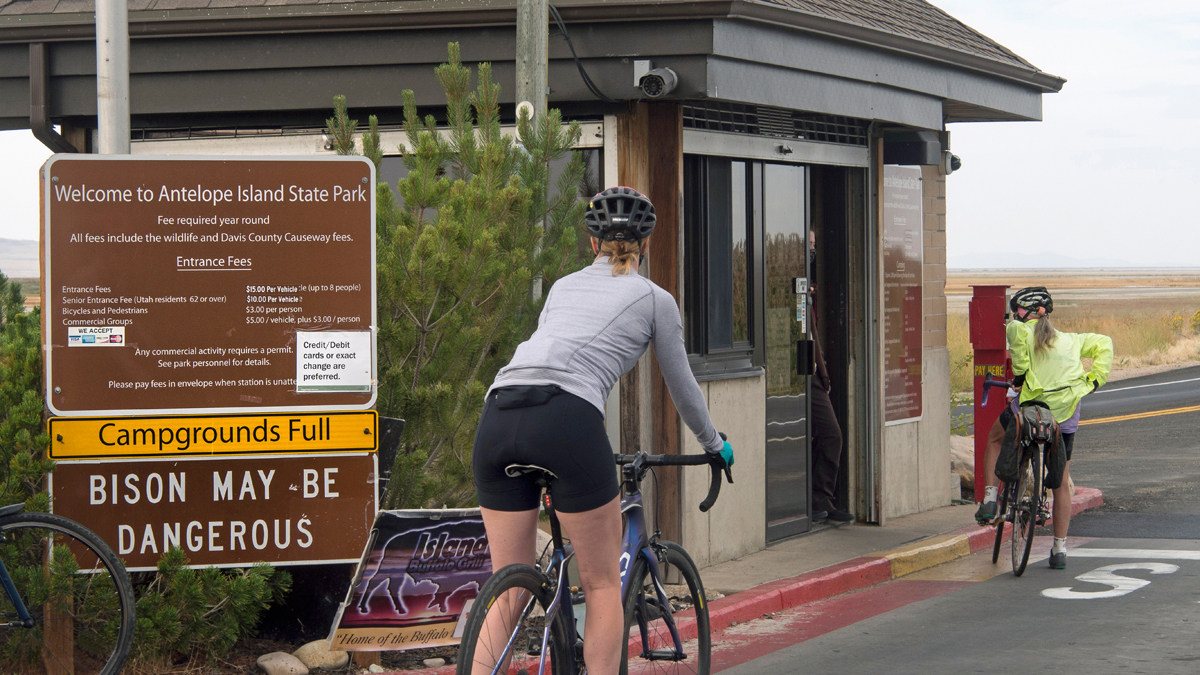
Antelope Island’s forty-two square miles are separated into the North Island and the South Island by a tall chain-link fence that crosses the island from east to west. The South Island is ninety percent of the island. It has one paved road that follows the east coast to a preserved ranch halfway down the island. This ranch was originally started by the Church of Jesus Christ of Latter-Day Saints, which brought cattle to the island. The cattle are long gone, but the South Island is home to bison, pronghorns, deer, bighorn sheep, and other fauna, which roam freely. Descendants of the twelve bison introduced in 1893 have since become so numerous, they must be culled. Cyclists who have not yet been culled also roam freely on the South Island and remain free to enjoy its many wonderful trails. Since we were not on mountain bikes, we saved this single-track experience for another time.
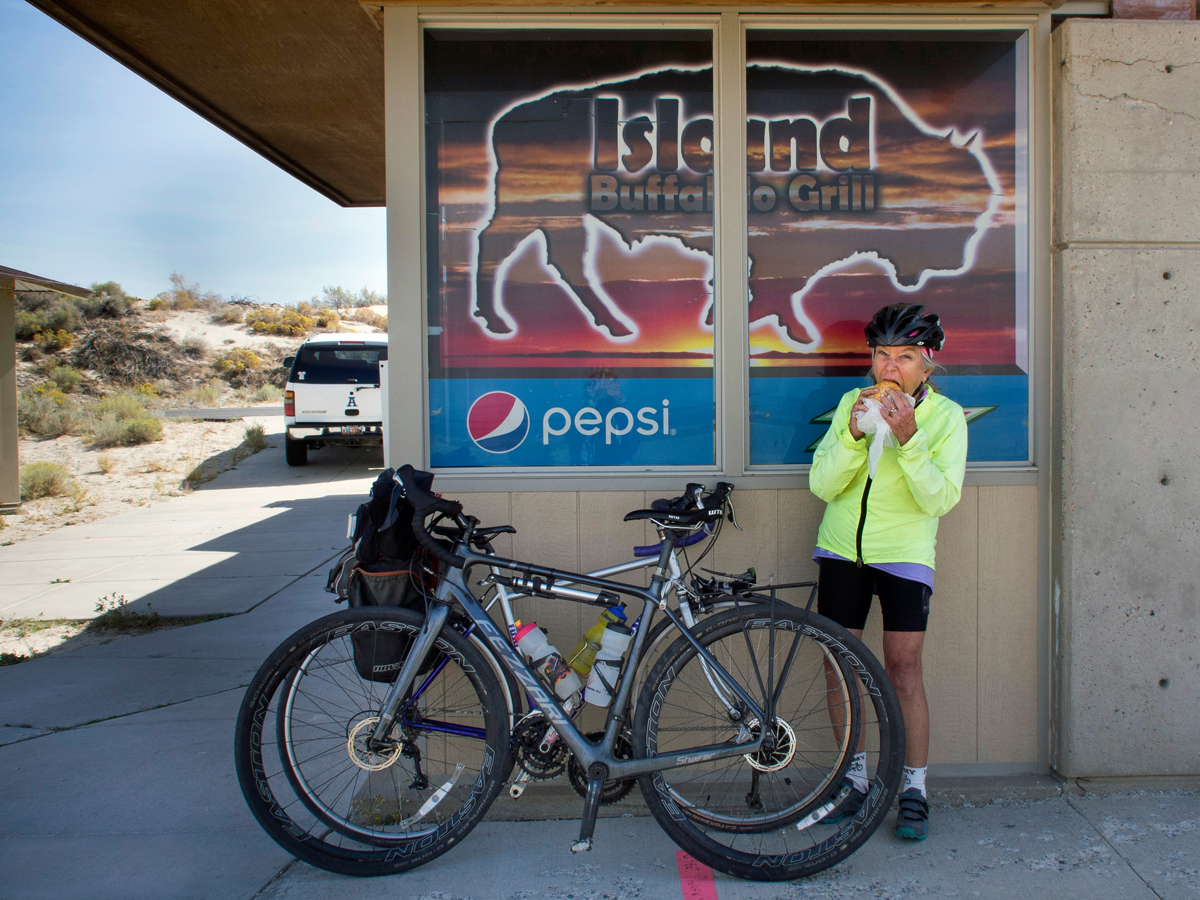
The North Island has the visitors’ center and one restaurant, the Island Buffalo Grill. We put on our masks and ordered a buffalo burger from a window. It was handed to us across a table blocking the doorway. We had to share it standing up because all outdoor tables had been removed. C’est la COVID. Nevertheless, the buffalo burger was delicious.
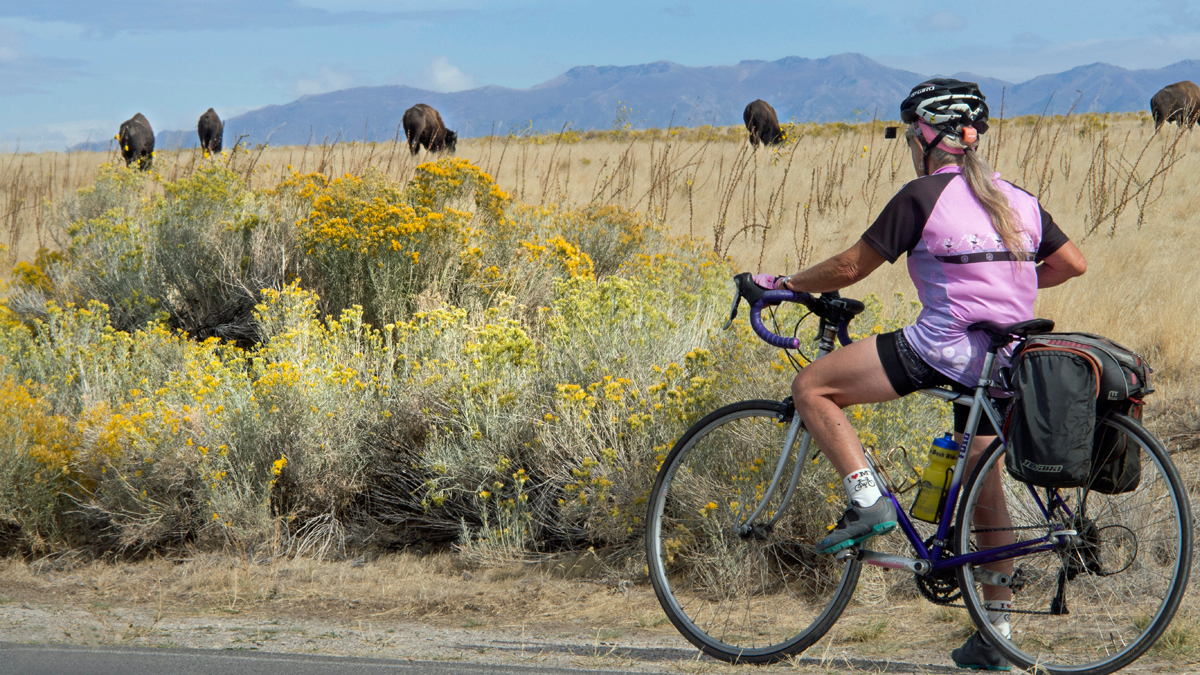
The North Island also has swimming beaches and a couple of treeless campgrounds. The beaches are a long way out, across deep, loose sand and hardpan salt. We saw nobody swimming, but if it had been warmer, we might have tried ourselves. In the 1940s and 1950s, postcards with a small bag of real Great Salt Lake salt stapled to one corner showed people floating high on their backs while reading newspapers. We bicycled every road on the North Island including some white, salt-encrusted, bone-rattling washboards. The best views came after the short climb to Buffalo Point with its magnificent mountain panoramas to the south, long strands of Great Salt Lake beach to the east, and sweeping vistas of blue water and distant islands stretching toward Nevada to the west. Below Buffalo Point lay a valley dotted with hikers, horseback riders, and bison.
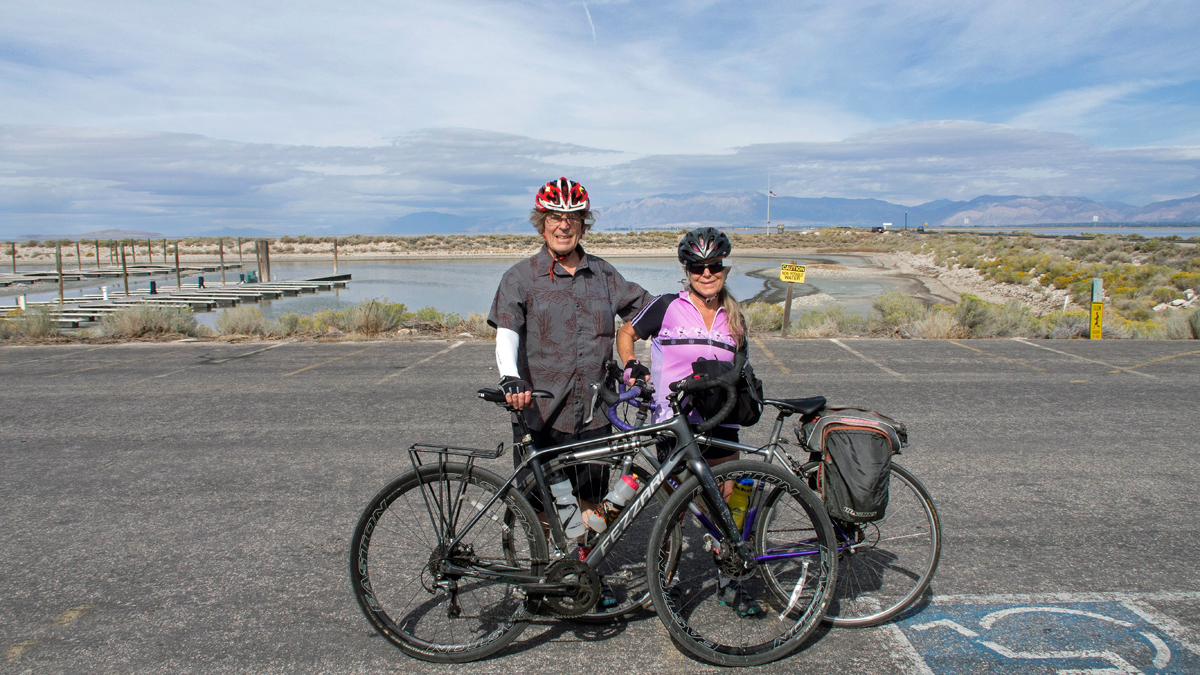
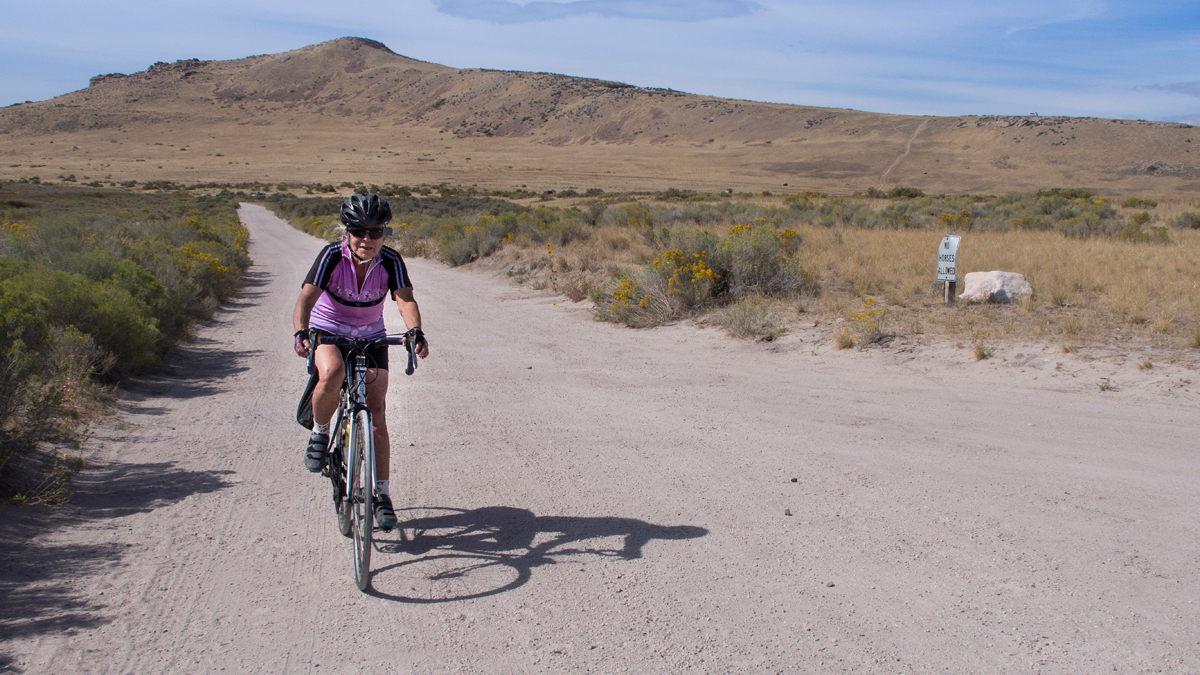
The visitor center also had nice views. There, after donning masks, passing inspection at the door, and being warned to stay six feet away from others, we learned about island flora and fauna, local geology, and how the Great Salt Lake’s predecessor, Lake Bonneville, had once submerged most of western Utah as well as parts of Idaho and Nevada.
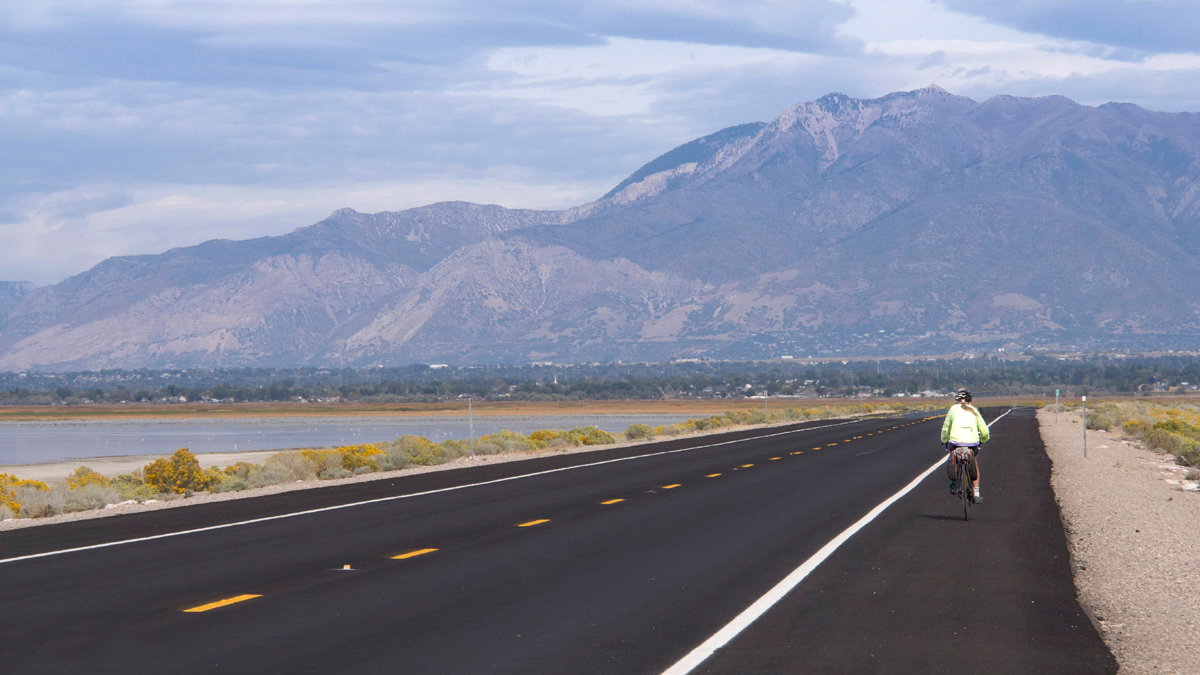
We hated to leave the park and resolved to someday come back and tour some of that single-track on the South Island. On our way back to Hooper, while fighting winds on the causeway, we stopped to rest and watch seagulls, ducks, cormorants, and shorebirds. After the causeway, we discovered the paved Syracuse Bike Trail overlooking a very bucolic countryside that allowed us to bypass some of those long, straight, secondary highways we had travelled in the morning. Then, after we had negotiated a few dead-end roads, we arrived back at my niece’s home. We had bicycled only 42 miles, but we had completed a successful Bike Your Park Day adventure. After we donned our masks one last time, my niece presented us with two, decorative, Utah pumpkin trophies from her garden, while we gave her a pint of olives from our California olive tree, and her son showed us the bruise the shotgun had made on his shoulder.
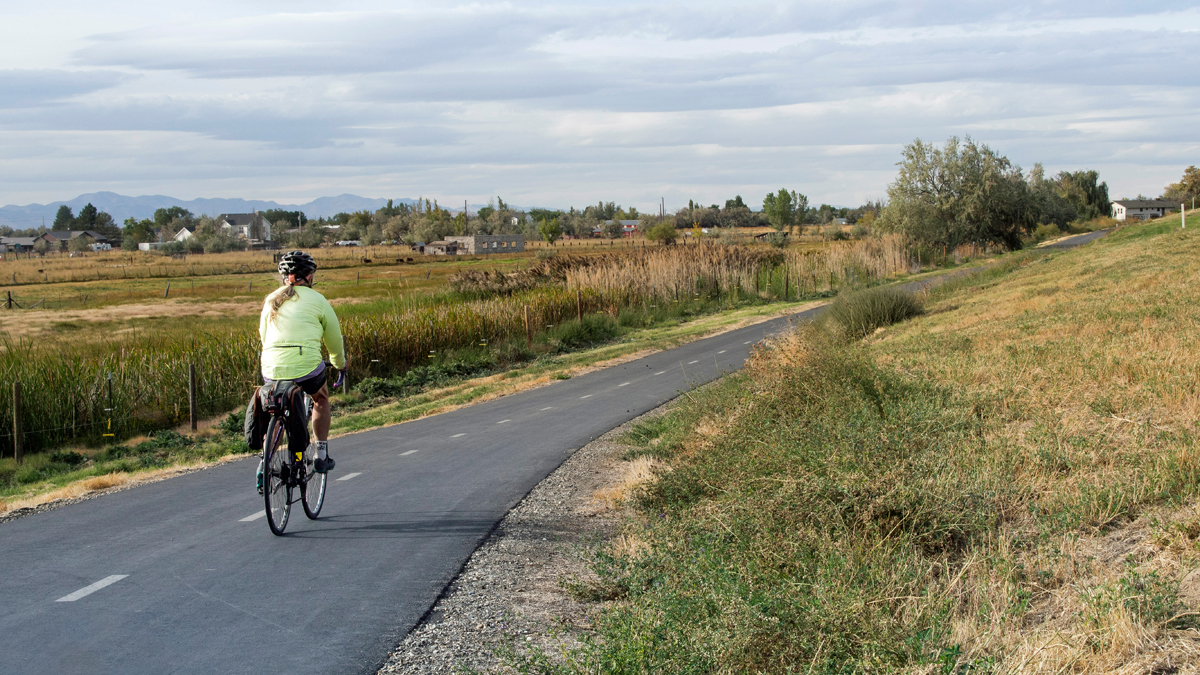
Whether you are from California or Utah, if you have never been to Antelope Island, we recommend you go. You will not be disappointed. However, it will be preferable if you can manage your visit when the coronavirus no longer stalks the land.

